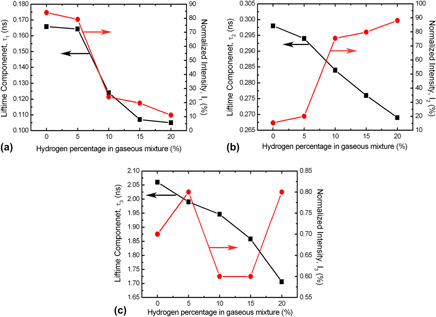Article contents
Characterization of hydrogen-induced structural changes in Zr-based bulk metallic glasses using positron annihilation spectroscopy
Published online by Cambridge University Press: 03 July 2012
Abstract

The effects of hydrogen on the structure of Zr-based bulk metallic glasses were investigated by positron annihilation lifetime spectroscopy. Three lifetime components are identified, indicating the presence of three distinct size ranges for open volume defects in the glass. The concentration of the smallest sites identified as tetrahedral interstitial holes in the densely packed and the intermediate sites identified as flow defects, changes with hydrogen addition. The concentration of tetrahedral interstitial holes in Zr55Cu30Ni5Al10 alloys initially increases with the increase of hydrogen content. When Zr55Cu30Ni5Al10 alloys were prepared in Ar + 10%H2 atmospheres, the concentration of tetrahedral interstitial holes reaches a maximum, which may provide a more dense random-packed structure. For Zr57Al10Cu15.4Ni12.6Nb5alloys, the increase of hydrogen content causes a decrease in the concentration of tetrahedral interstitial holes and an increase in the concentration of flow defects.
- Type
- Articles
- Information
- Copyright
- Copyright © Materials Research Society 2012
References
REFERENCES
- 4
- Cited by




